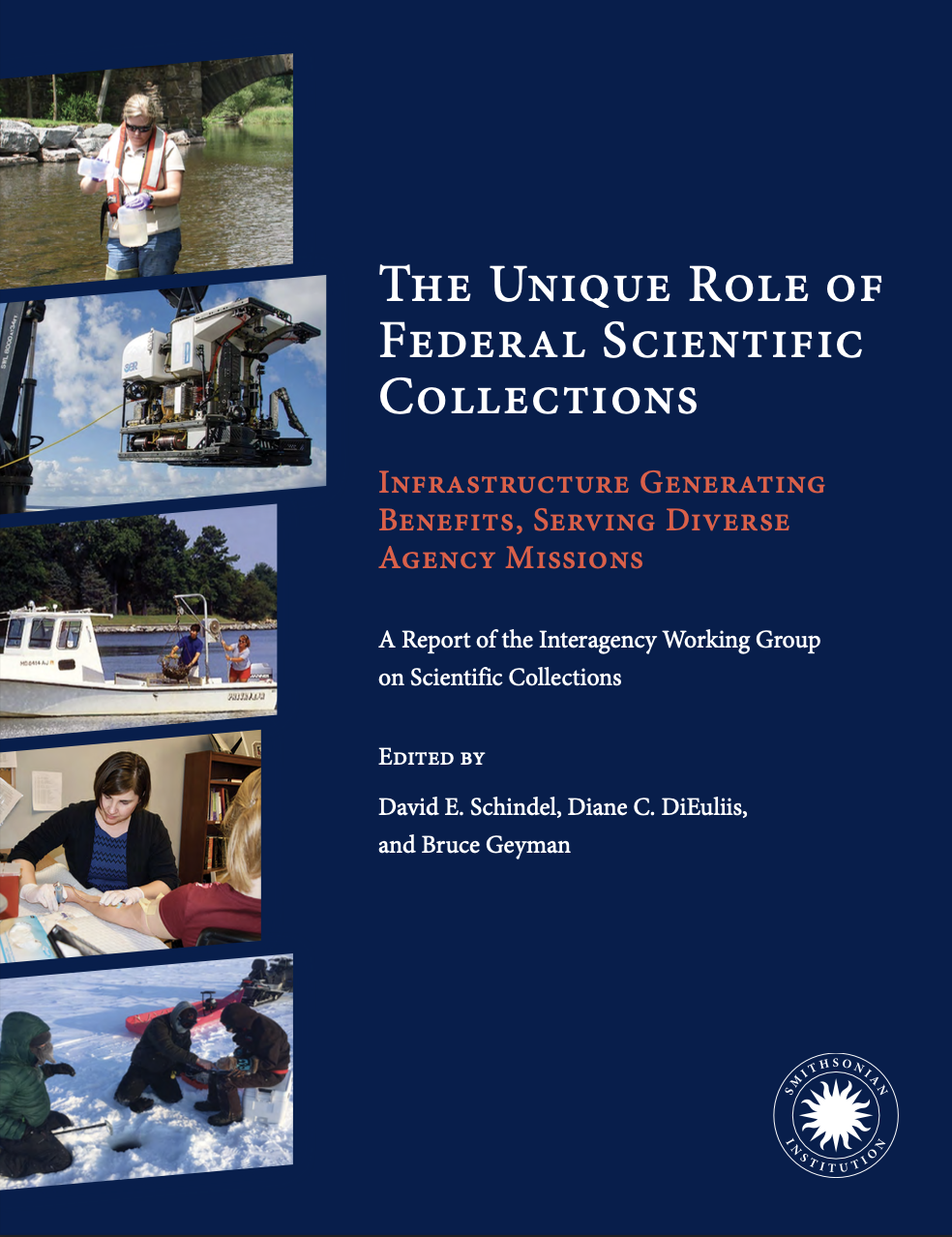Background. The White House National Science and Technology Council established an Interagency Working Group on Scientific Collections (IWGSC) in June 2006 with a charter to “address the scientific, environmental, societal, and national security needs for such collections”. In 2009, this new Working Group published its “Green Report” with a first-ever survey of Federal scientific collections and a description of the benefits they generate for the Nation.
The U.S. Federal government conducts and supports research in a broad range of scientific disciplines. This research commonly relies on physical objects and specimens that range from microbes to moon rocks, from fossils dating back billions of years to emergency medical samples taken from human populations during pandemics. Federal departments and agencies have made – and continue to make – strategic decisions to retain and preserve these objects based on their potential value for future use. Billions of objects housed in thousands of these collections are assets available to the Federal, non-Federal, and international research and development communities.
The Report. In 2020, IWGSC began to consider the progress in the support of Federal scientific collections since the publication of the Green Report in 2009. This new report, informally known as “the Blue Report”, reviews the work since publication of the Green Report and enumerates the most important issues that need to be addressed in the decade to come. Most of this new report updates and expands on a major theme of the Green Report: the tangible benefits generated by Federal scientific collections.
The report’s presentation of 21 vignettes demonstrates that Federal scientific collections serve uniquely far-ranging missions. These missions include fundamental and applied research and education, like collections in universities, colleges, non-profit and for-profit organizations, but they extend much further. The report argues that the long-term stability created by authorizing legislation, in combination with Congressional support for Executive branch departments and agencies, has enabled scientific collections to be built and used for long-term governmental missions. The vignettes highlight Federal collections that are dedicated to the Covid-19 response and improving national health, climate change research and mitigation, ensuring the Nation’s food security, environmental health and safety, as well as goals in scientific discovery, innovation, and commerce that are served by non-Federal collections.
The report was published by the Smithsonian Institution Scholarly Press as an Open Access Technical Report.
Suggested Citation. Schindel, D. E., DiEuliis, D. C., & Geyman, B. (2023). The Unique Role of Federal Scientific Collections: Infrastructure Generating Benefits, Serving Diverse Agency Missions. Smithsonian Institution Scholarly Press.
Additional Resources. The following materials provide other summaries about the content of the Blue Report.
- IWGSC Press Release: Press Release forthcoming.
- Introductory Slide Presentation [PDF, 11 slides] This presentation is available for stakeholders and collaborators to use when referencing the Blue Report.

